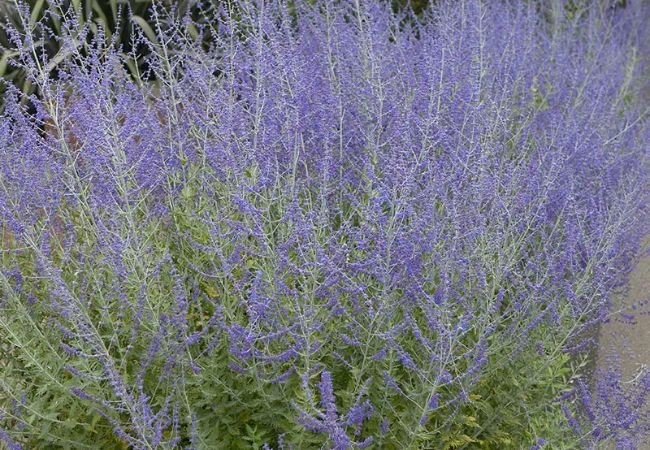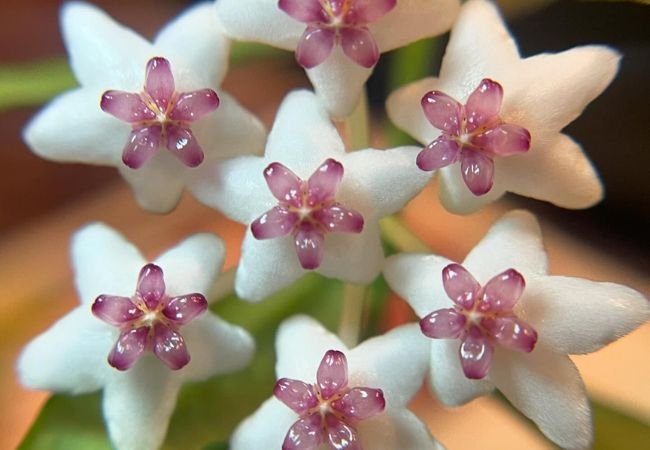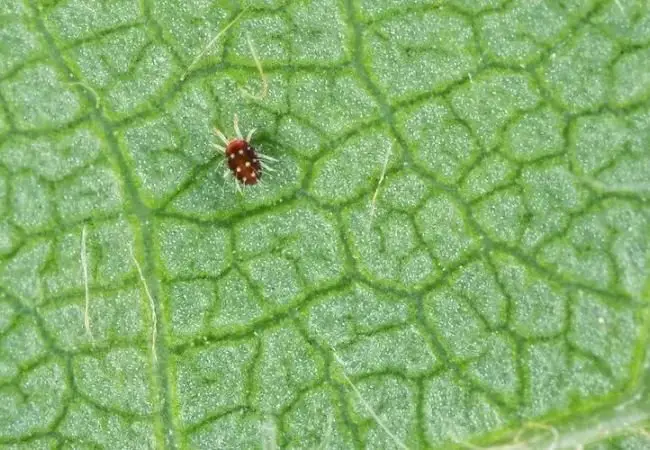Learn how to grow and care for Little Spire Russian Sage, a compact and elegant perennial known for its vibrant purple blooms and silvery foliage. Perfect for gardeners seeking low-maintenance, drought-resistant plants.
Little Spire Russian Sage (Perovskia atriplicifolia ‘Little Spire’) is a compact, versatile perennial that brings a touch of elegance to any garden. Known for its slender spikes of lavender-blue flowers and silvery-green foliage, this plant offers long-lasting color and a delightful fragrance. In this guide, we’ll explore everything you need to know about growing and caring for Little Spire Russian Sage.
About Little Spire Russian Sage

Little Spire Russian Sage is a dwarf variety of the traditional Russian Sage, featuring:
- Height: 24-36 inches tall
- Spread: 18-24 inches wide
- Blooming period: Mid-summer to fall
- Fragrant foliage and flowers
- Drought-resistant nature
Why Choose Little Spire Russian Sage?
This compact variety offers several advantages:
- Perfect for smaller gardens
- Low maintenance requirements
- Drought tolerance
- Attracts pollinators like bees and butterflies
- Deer and rabbit resistant
Growing Conditions
Sunlight Requirements
Little Spire Russian Sage thrives in:
- Full sun (6+ hours of direct sunlight daily)
- South or west-facing locations
Soil Needs
These plants prefer:
- Well-draining soil
- Slightly alkaline to neutral pH (6.5-7.5)
- Sandy or average garden soil
For best results, avoid heavy clay soils that retain too much moisture.
Climate Considerations
- Hardy in USDA zones 4-9
- Tolerates hot, dry conditions
- Can handle some humidity
Planting Little Spire Russian Sage
Follow these steps for successful planting:
- Choose a location with full sun and good air circulation
- Dig a hole twice the width of the root ball
- Plant at the same depth as in the nursery container
- Space plants 18-24 inches apart
- Water thoroughly after planting
Best time to plant: Spring or early fall
Care and Maintenance
Watering
- Water deeply but infrequently
- Once established, very drought-tolerant
- Avoid overwatering to prevent root rot
Fertilizing
- Light feeder; minimal fertilization needed
- Apply a balanced, slow-release fertilizer in spring if desired
- Avoid over-fertilizing, which can lead to floppy growth
Pruning
Proper pruning is essential:
- Cut back to about 6 inches in early spring
- Remove any dead or damaged stems
- Deadhead spent blooms to encourage reblooming
Winter Care
- Leave stems intact through winter for visual interest
- Apply light mulch in colder regions
- Avoid heavy mulching, which can lead to rot
Common Problems and Solutions
Pests
Generally pest-resistant, but occasionally affected by:
- Spider mites
- Whiteflies
Solution: Use insecticidal soap or neem oil if needed
Diseases
May experience:
- Root rot in poorly draining soil
- Leaf spot in humid conditions
Solution: Ensure good air circulation and proper drainage
Companion Planting
Little Spire Russian Sage pairs beautifully with:
- Black-Eyed Susans
- Coneflowers
- Ornamental grasses
- Yarrow
- Sedum
Landscape Uses
Versatile in the garden, use Little Spire Russian Sage for:
- Mixed borders
- Rock gardens
- Container plantings
- Xeriscaping
- Pollinator gardens
Seasonal Interest
Little Spire Russian Sage provides year-round appeal:
- Spring: Silver-green foliage emerges
- Summer: Lavender-blue flower spikes appear
- Fall: Extended blooming period
- Winter: Architectural interest from dried stems
Propagation
You can propagate Little Spire Russian Sage through:
- Division
- Best done in early spring
- Divide every 3-4 years to maintain vigor
- Softwood Cuttings
- Take 4-6 inch cuttings in late spring
- Use rooting hormone for better success
Benefits for Wildlife
Little Spire Russian Sage supports local ecosystems by:
- Providing nectar for bees and butterflies
- Attracting beneficial insects
- Offering shelter for small wildlife
Tips for Success
- Be patient – it may take a season to establish
- Plant in groups for maximum impact
- Allow enough space between plants for good air circulation
- Don’t overwater or overfertilize
- Embrace its natural growth habit
Little Spire Russian Sage is a fantastic choice for gardeners looking for a low-maintenance, drought-tolerant plant that provides long-lasting color and attracts pollinators. With its compact size and stunning purple blooms, it’s perfect for both small gardens and larger landscapes. By following the care guidelines in this guide, you can enjoy the beauty and benefits of this enchanting plant for years to come.
Whether you’re a seasoned gardener or just starting out, Little Spire Russian Sage is a reliable and rewarding addition to your garden. Happy gardening!
For more gardening tips and plant care guides, visit usagardenhub.com.







3 Comments on “Little Spire Russian Sage : Growing and Care Guide for This Enchanting Plant”